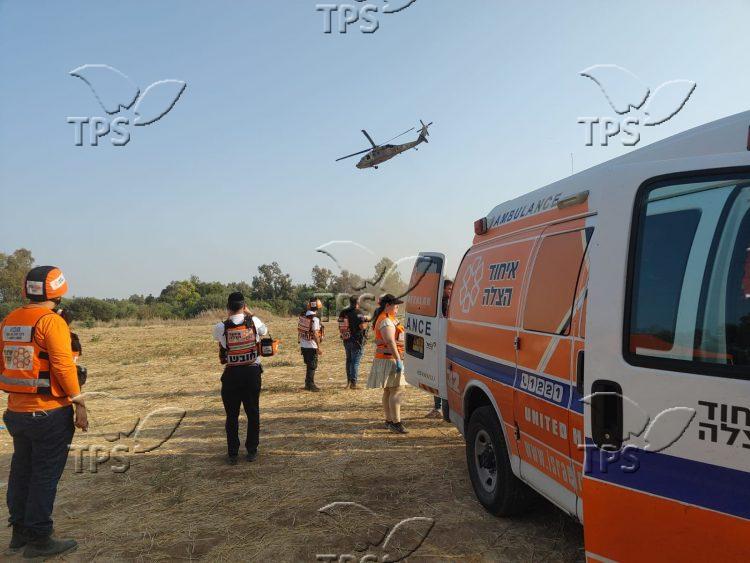‘Put Emotion Aside’: Israeli Emergency Responders Save Lives Under Fire
Jerusalem, 16 October, 2023 (TPS) -- Linor Attias has traveled with United Hatzalah delegations to disaster areas around the world. She thought she saw it all, but Attias struggles to talk about the situation she had to pull herself through in southern Israel — her own country.
“The whole area looked like someone had taken a violent video game and turned it into reality” Attias, Hatzalah’s Deputy Director of Disaster Management told the Tazpit Press Service, describing the aftermath of Hamas’s assault on Gaza-area communities.
“Here, it was all different: the scope, the timing, the barbarism. It wasn’t even a battlefield; it was simply a slaughterhouse.”
Emergency responders faced the most complex situation they had ever seen. GoPro videos circulating on social media showed the terrorists deliberately firing on ambulances. In at least one instance, the terrorists killed an ambulance driver and stole his vehicle. Many areas were not secured, and rocket barrages frequently screamed overhead.
David Bader, an emergency medical technician with United Hatzalah, was one of the first responders to arrive at the Supernova Sukkot Music Festival, a rave attended by 3,000 people on the beach of Kibbutz Re’im. At least 260 people were killed there.
“No one understood or knew the magnitude of the event at all,” Bader told TPS.
“We arrived at the Adami intersection, where we found about 24 bodies, some of them terrorists and some civilians. Then we moved to the festival arena. It was a complex and difficult scene, with some of the victims found on the side of the road, some were in the cars, half-torsos outside, as they were trying to flee when they got murdered,” Bader said.
“I yelled to our operator on the line, there are dozens of dead here, send out more forces!” he recalled.
Bader’s team made a quick decision to evacuate as many of the injured by helicopter as possible, he said. But in the days to come, “While the army was operating in the infiltrated villages, we had ambulances standing outside there, evacuating injured soldiers,” he said.
“We were taking care of wounded with severe injuries, those with gunshot wounds and even amputations. I put a lot of artery blockages.”
Bader and Attias agreed that there was no time to process the emotional toll. That will come later.
“I just have to put the whole emotion aside and work with the focus on mind, like a machine, so we save as many people as possible,” he said. “Dozens of dead in front of our eyes, people in every condition. It’s very hard,” Bader said.
Asked about a moment where she almost cracked under the pressure, Attias said there many.
She recalls most vividly sitting in area where a number of survivors had been gathered, watching as 6-8 victims descended from one ambulance after another.
“These were the numbers we had to overload ambulances to evacuate as many as possible due to the lack of vehicles,” Attias said.
“Several mothers with half-naked children came down from there, they were dressed the way they slept at night, in very light clothing. The soldier who was there took off his shirt and gave it to the boy who came with only pants. Everyone was sooty, because the terrorists burned tires in the houses to make them come out of hiding. They were thirsty for oxygen, didn’t stop gasping for air. The mothers cried because they didn’t know where their husbands were,” Attias recalled.
“That’s when I started crying.”


